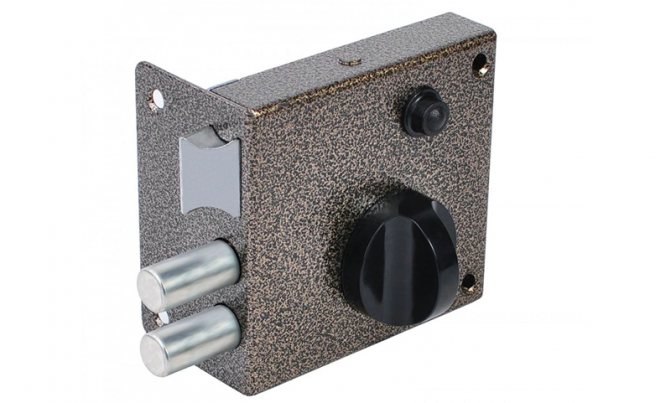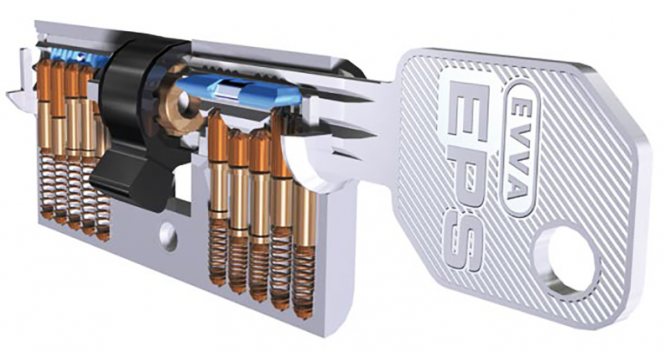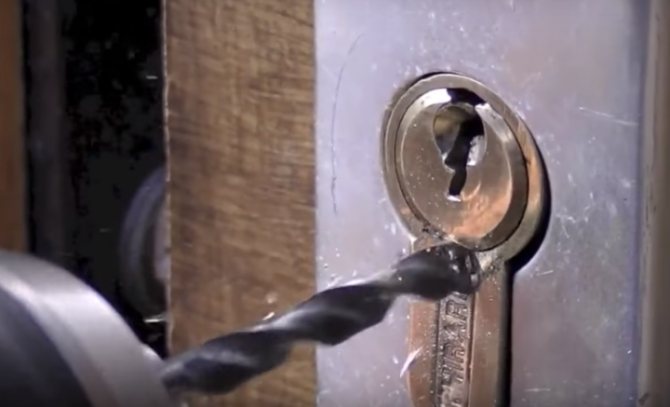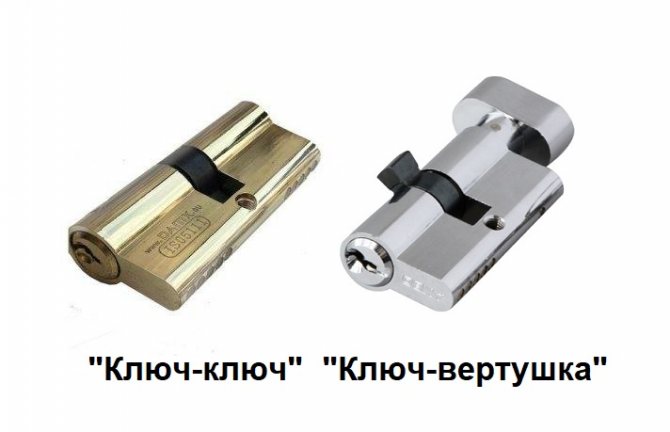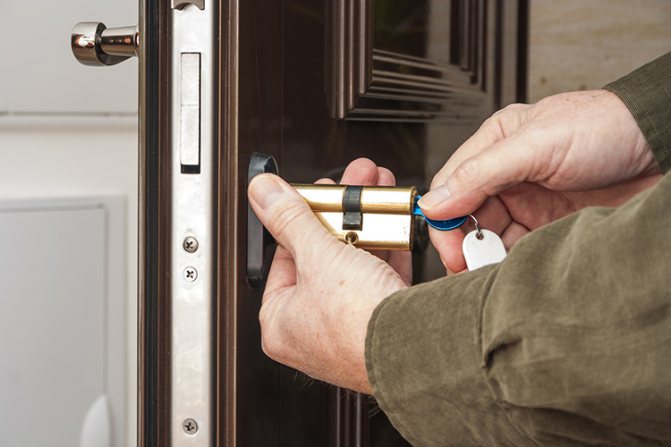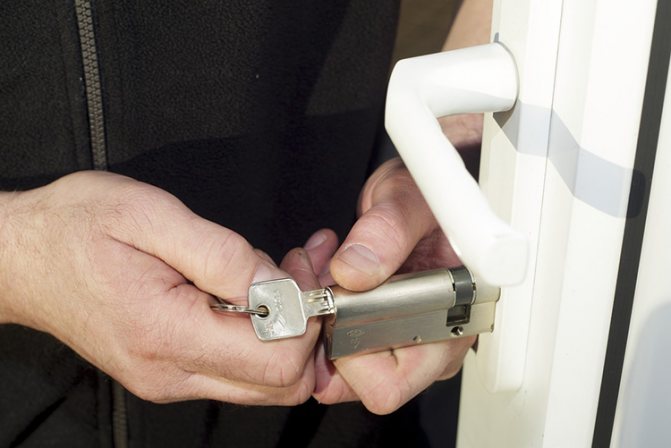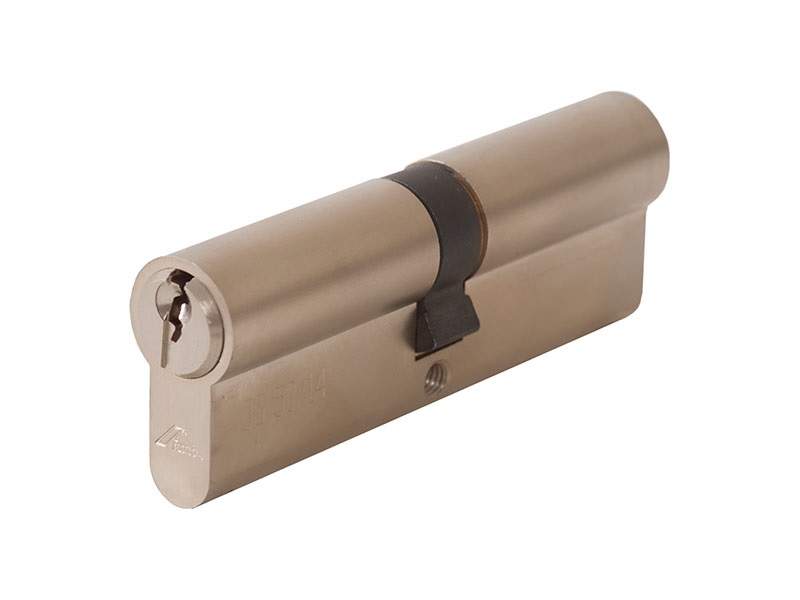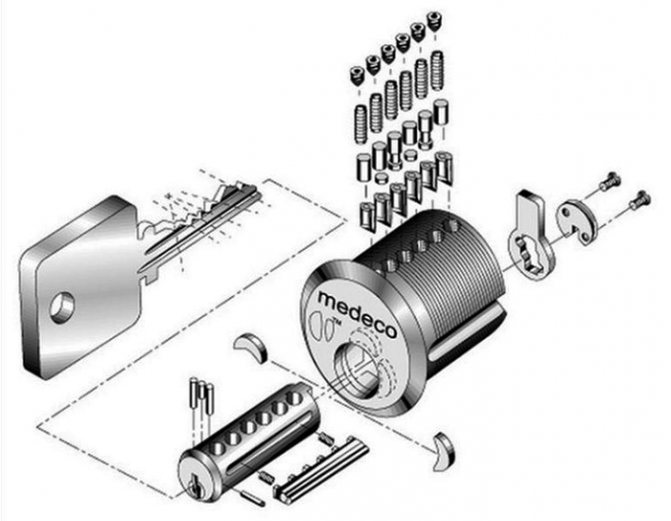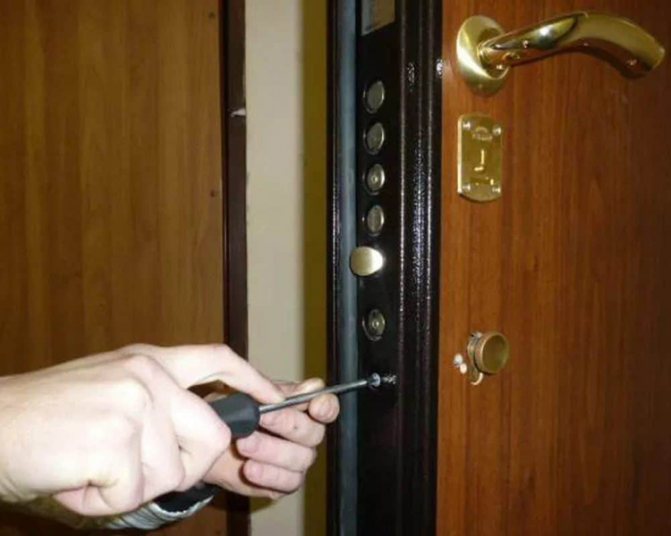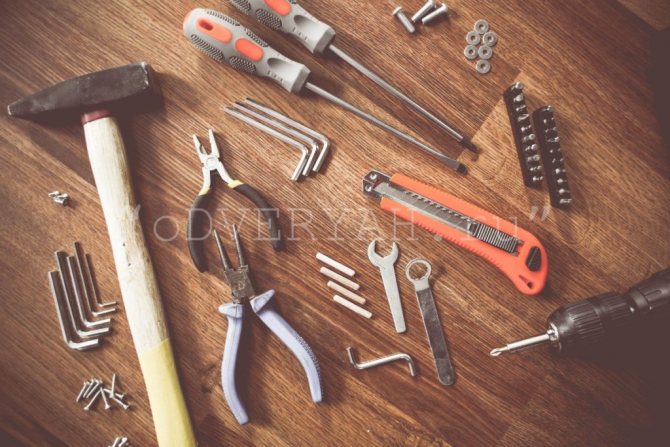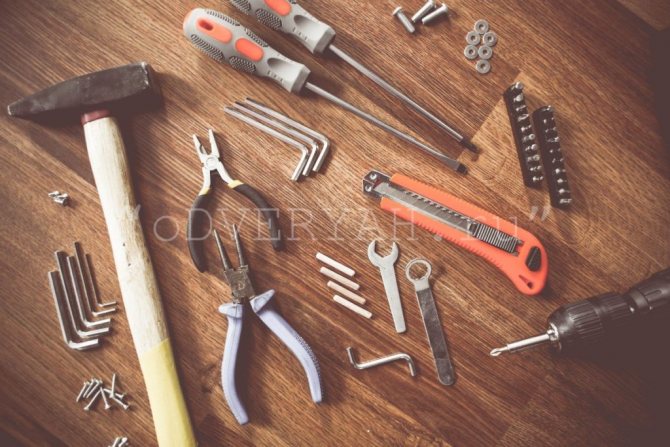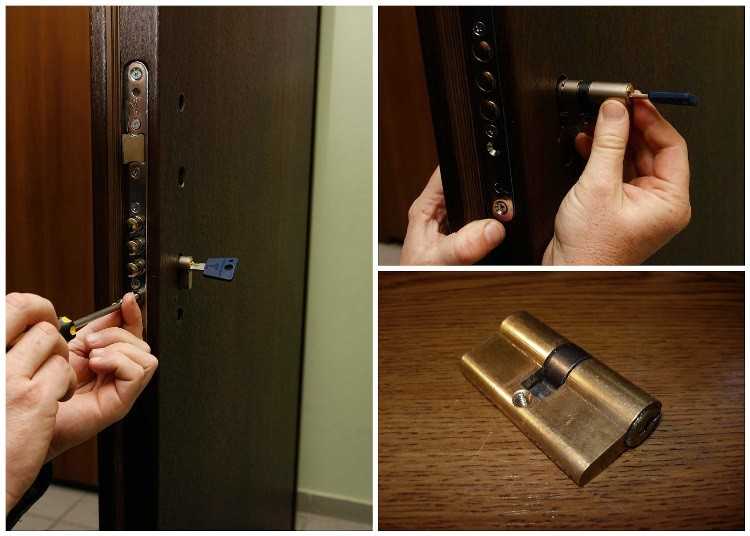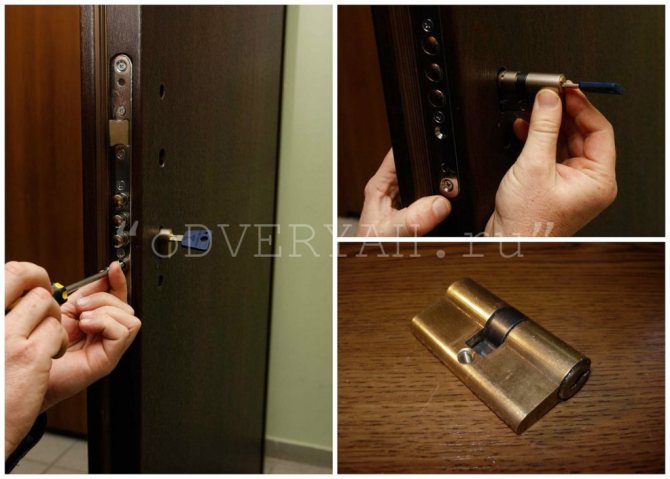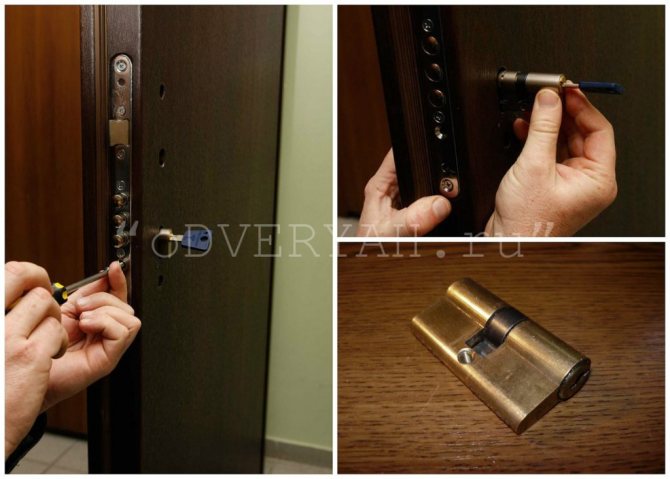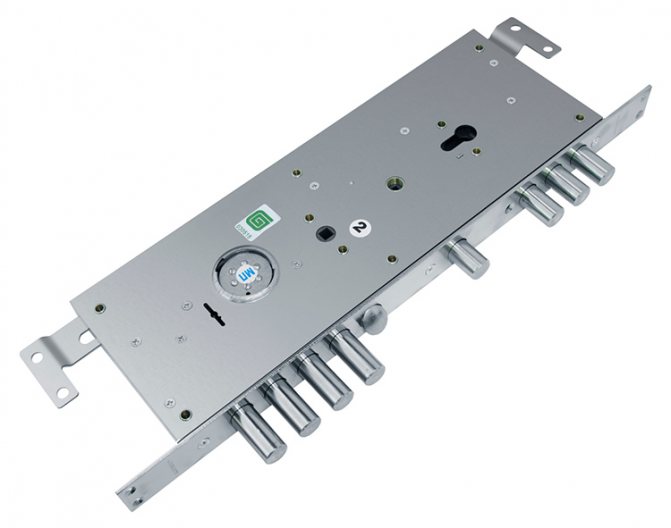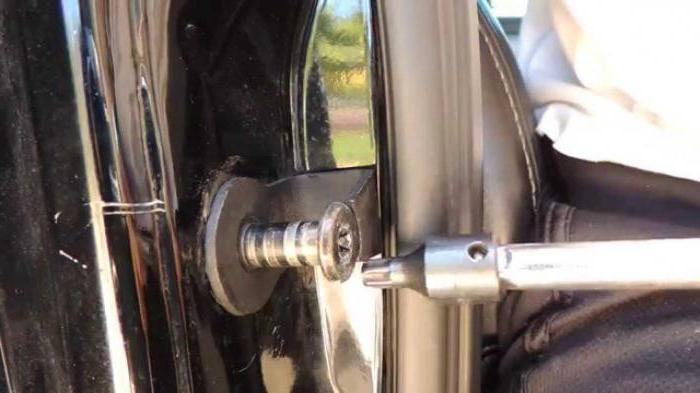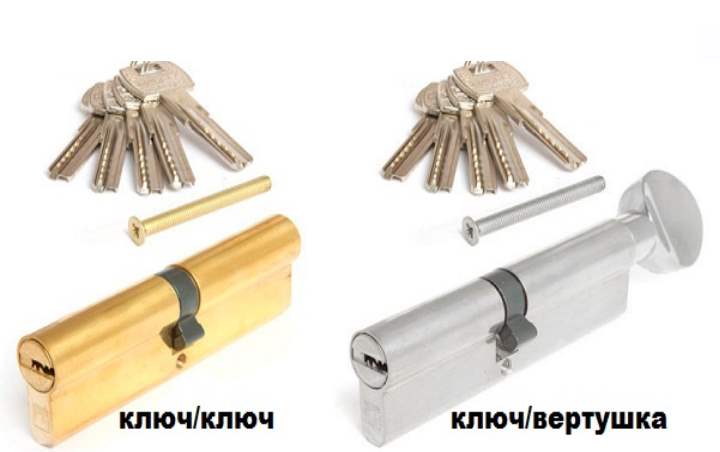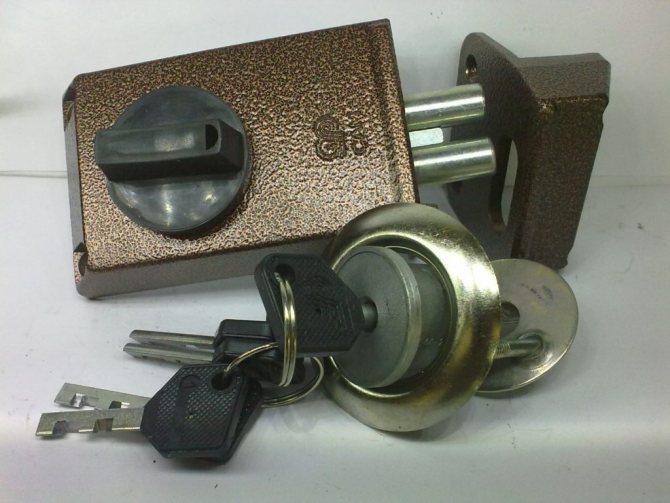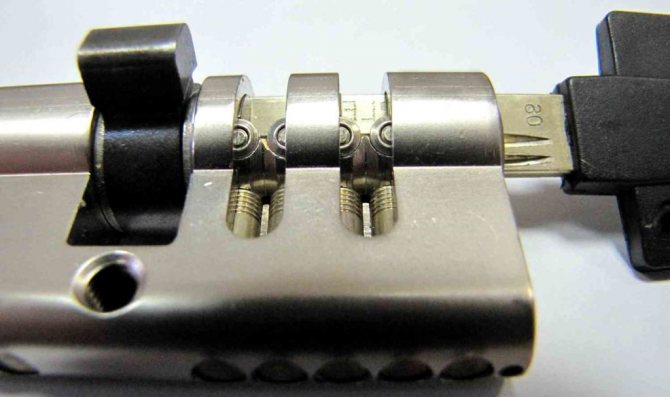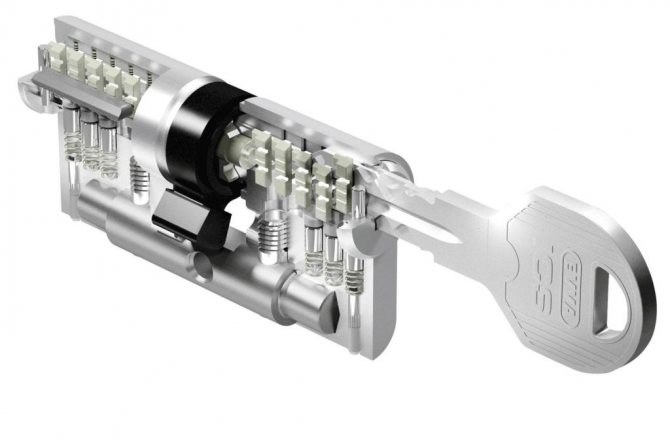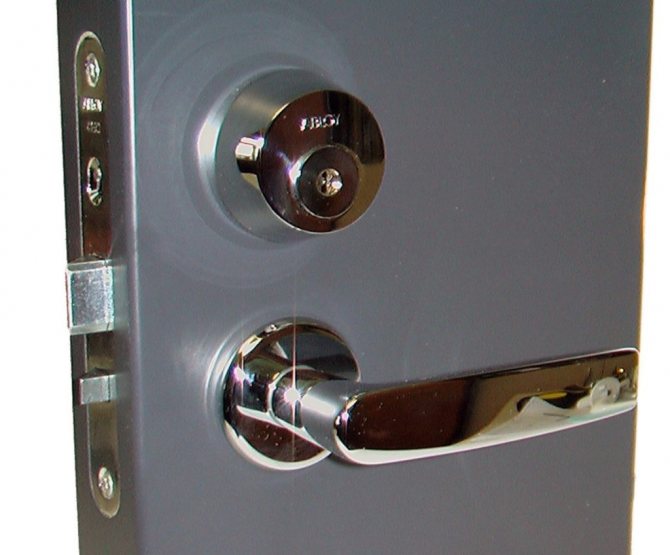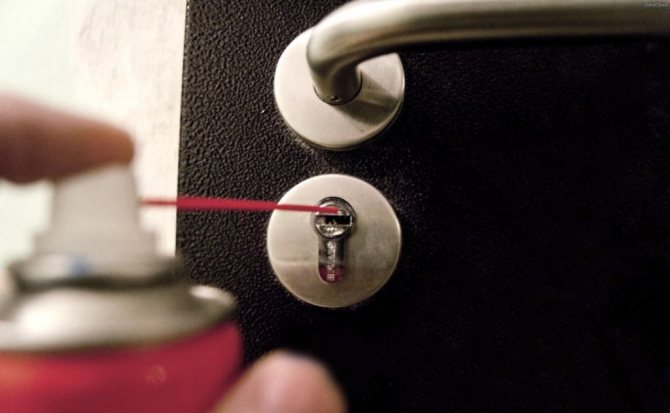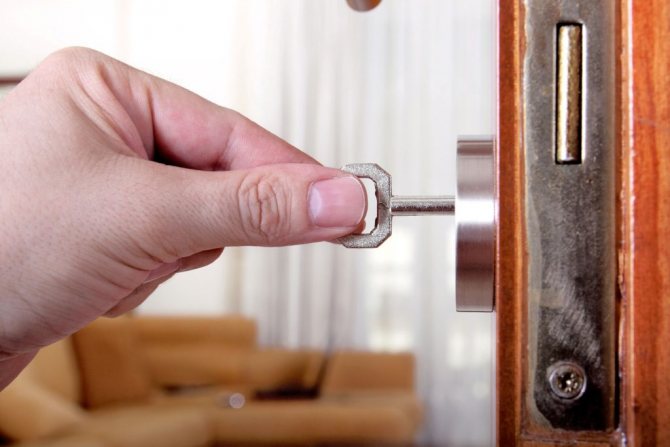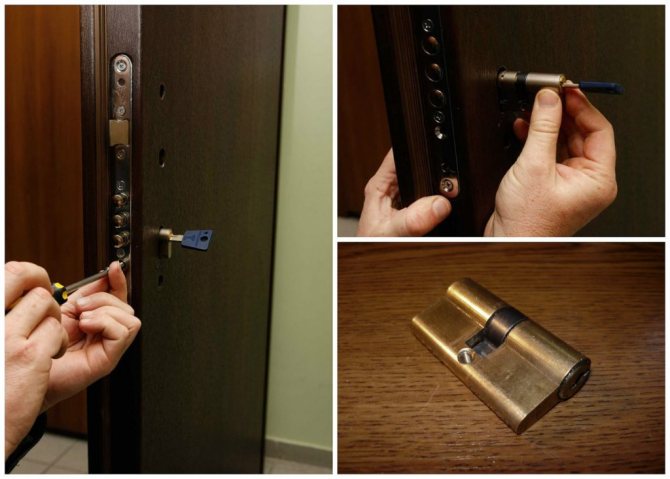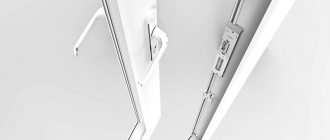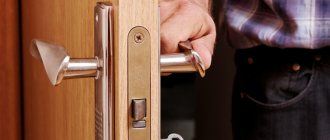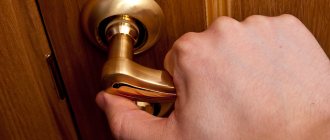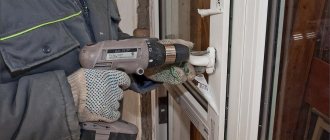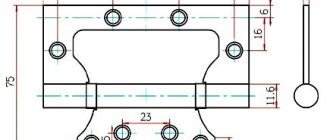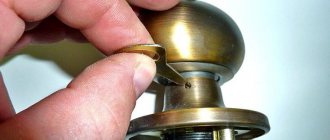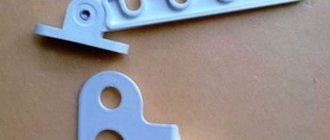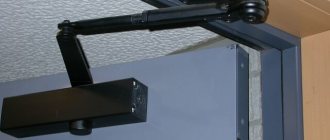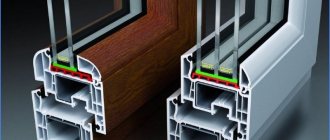Almost everyone locks the door if they leave home. Therefore, sooner or later, he faces a problem when the front door lock for some reason has become unusable. This is quite natural, because each item deteriorates and breaks over time, which means it is time to repair the lock or completely replace it. Usually it is enough to replace the lock core and the door is locked again. How you can remove the front door lock cylinder and replace it without calling the master, read our article.
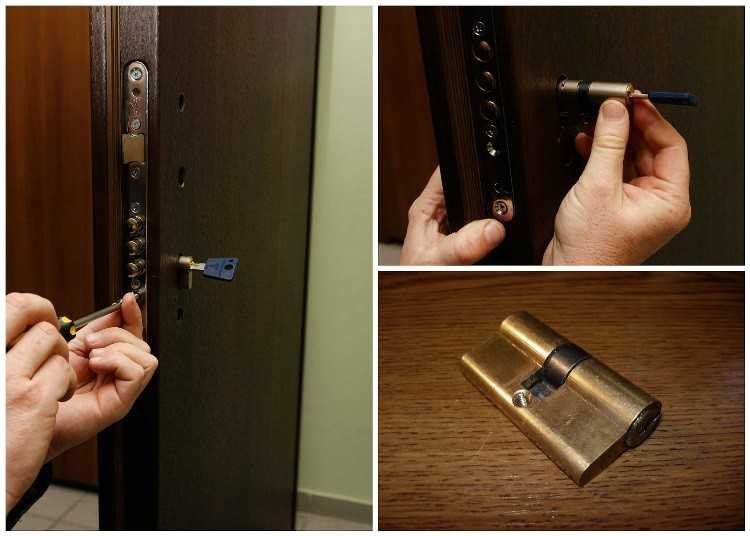
Why do I need to change the larva
The core of the lock bears the entire load during operation, including mechanical damage and manipulation by burglars. The need to replace a cylinder, even if it is serviceable, arises in the following situations:
- Loss of the key. The loss of even one key from the kit is a reason to urgently change the lock cylinder. There is a high probability that the key is not just lost, but stolen. If you delay with the replacement, you may find that the property is lost due to the penetration of an unwanted guest.
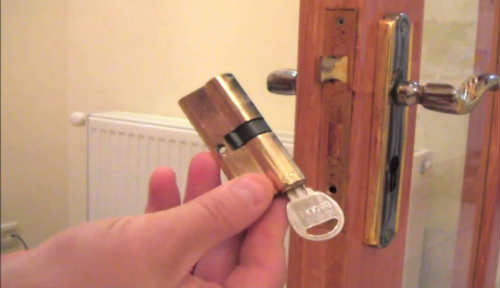

- Temporary transfer of the key to other people. If the key has been handed over to a hired worker for repairs or cleaning, it is recommended that the lock cylinder be replaced at the end of the work, even if the key has been returned. The reason is that they could have made a duplicate key while it was in the wrong hands.
- Doubts about reliability. Entrance metal canvases are sold with locks, the reliability of which is questionable. Many owners change the core immediately after installing a new door leaf.
- Hacking or attempted hacking. After a rude intervention, even if the opening of the entrance group failed, the lock is damaged and does not function as before.
A defective cylinder must be replaced. It is worth paying attention to the slightest problems, for example, the need to apply more effort when turning the key than before. If you ignore such changes, then the problems will increase until the door is locked with the key inside, and it will be impossible to enter or exit the apartment.
If there is no key
If the key is preserved, then removing the lock cylinder is a matter of a few unscrewed bolts. Another question is if there is no key - in this case, the lock pin will remain in engagement with the bolt and without physical destruction of the lock, it is simply impossible to remove it.
There are several ways how to turn or break the pin - which one to use depends on the desire to preserve the integrity of the door lock and the lock itself.
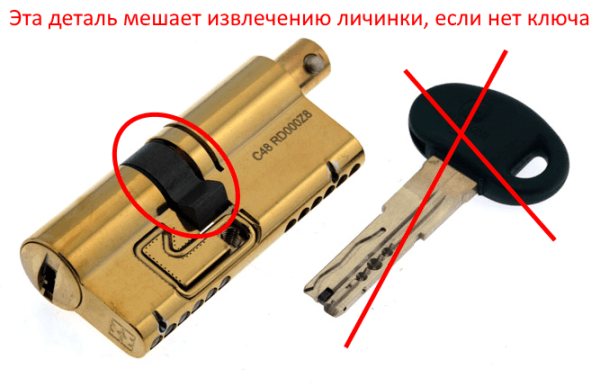

Knocking out
This method should not be considered seriously, since it does not correspond to the task at hand - to leave the lock intact, to work with another secret.
This method of opening is akin to the banal breaking of doors, only here it is not the door leaf that deteriorates, but the lock.
In any case, it is used in the most extreme cases, when the door needs to be opened urgently, and there is no time for preparation.
To get the result, you need to hit the lock cylinder with a chisel and a hammer. The pin will simply bend the metal of its body, and the secret will jump out, after which it will be possible to move the bolt back and open the doors.
The hammer should be heavy enough, and the chisel blade should not be wider than the lock. If you take a light hammer, then it will not be able to overcome the force of elasticity and will simply bounce off after impacts. If you take the chisel out of size, then it will ruin the door leaf.
The lock, and possibly part of the door leaf, will have to be replaced completely.
Breaking out
When using this method, the door remains intact, but the lock will also have to be changed completely. The essence of the method is to hook the secret and turn it abruptly. An adjustable (gas) wrench or similar device is suitable for this.
As a result, all fasteners break out and the lock cylinder can be pulled out of its mechanism.
Everything is clearly shown in the video:
Reaming
Compared to knocking out the door, this is an order of magnitude more humane for the lock to extract the secret without a key, but if for some reason the secret needs to be kept (when the key is there, but it was forgotten), then it will absolutely not work.
If there is no hope of reopening this lock with a key, then reaming will be the easiest and fastest way to open the door, and it will be possible to do without calling the repairmen.
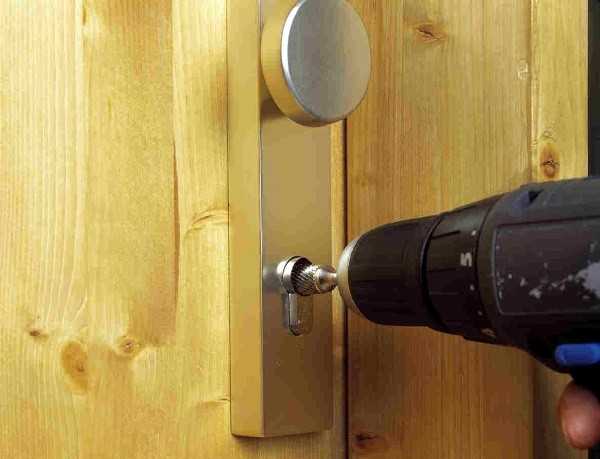

Drilling out the larva is quite simple - the drill is attached to the key hole, which is drilled at least to the middle, where the pin fastening is located, which clings to the deadbolt. The mount no longer clings to the locking mechanism and, under its own weight, turns inside the larva.
Sometimes it may be that when reaming the metal will bend and in this case the pin must be pushed into the larva by hand. A steel spoke is suitable for this.
Lock pick or bump key
The safest option for a lock is to use a master key. True, this requires certain skills and because of this, the previous method of opening the lock is often preferred (especially if the door needs to be opened urgently).
If you have nowhere to rush, and you want to keep the lock mechanism intact, then you can try yourself in the role of a burglar and use the master key. To do this, you need to understand how the secret mechanism works.
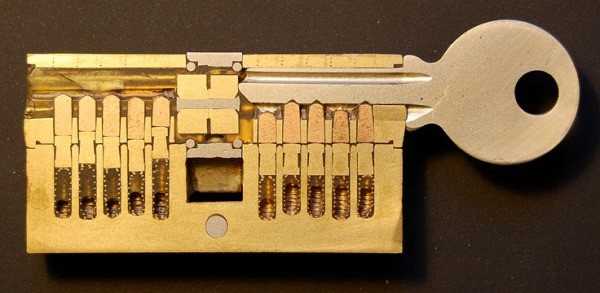

Inside the cylinder, the so-called pins are located on springs, which consist of two halves. If the center of the pin does not fall on the circumference of the cylinder, then the rotation of the latter will be blocked. The more complex the lock, the more pins are used in it, which must be simultaneously positioned at the desired height.
To open the lock, you need 2 wires - one straight to try to turn the cylinder, and the second, with a bent tip, you need to tap on the pins until they alternately line up in the desired combination. Time for such manipulations can be spent from ten minutes.
In addition to the wire, you can use a piece of saw blade for metal
What types are there
Before changing the cylinder, you need to decide what type it belongs to. A wide range is represented by the following types:
Cylinder. One of the most popular types that are installed on many doors. Cylinder systems, in turn, differ into such subspecies as "key-key" and "key-spinner", "gear" and "half-cylinder". They differ in the complexity of dismantling and installation, but each of them, with sufficient knowledge, can be changed independently.
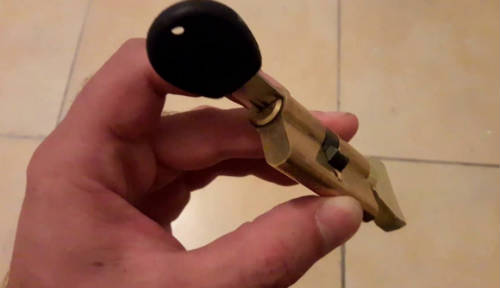

Pin. This species is also called English. It is inferior to cylinder burglar resistance, therefore it is used less often.
Disk. A characteristic feature of the locking design is the swivel discs that fix the lock in the locked position. It is difficult to replace this type, since it is difficult to find a related cylinder. Therefore, it is more advisable to replace the entire lock entirely.
Cruciform. Inside the mechanism are pins that can be easily turned using a Phillips screwdriver. Due to such a low level of burglary resistance, this type is in low demand.
Particularly difficult. The more complex the locking mechanism, the more reliable protection against burglary it provides.But this is associated with another difficulty: it is almost impossible to replace the larva on your own. There is a risk of spoiling a complex and expensive device, so it is advisable to use the help of a professional.
How to determine the possibility of self-replacement
Each type of cylinder requires certain steps to be replaced. There are types that cannot be replaced at all: in this case, the entire locking device is replaced. To determine the possibility of dismantling the old individual cylinder and installing a new one, you should pay attention to the following factors:
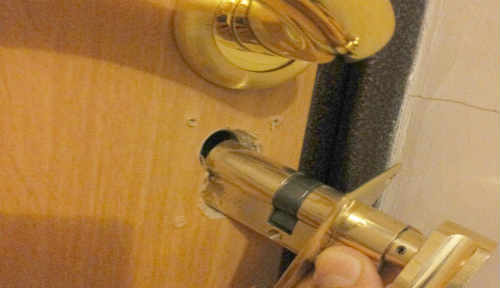

- Key shape. If it is flat with cutouts, cruciform or semicircular, supplemented with cuts, then the core can be replaced. If the key is round and there are two notched blades on its shaft, it means that the lock it serves is not a cylinder, but a lever lock. This is a different type, not based on a cylinder, but on levers.
- The design of the lock at the end of the door leaf. If the head of the screw for a screwdriver (Phillips or flat) is visible on the metal strip under the hole from which the locking tabs extend, then the lock cylinder can be changed. This screw holds the core and will have to be removed to remove it.
The cores in most cylinder mortise mechanisms can be replaced, but with overhead views it is much more difficult. Only some types, including SHO-25, allow point replacement of one element. Often, in order to protect the entrance doors from burglary, you have to either change the entire patch lock, or purchase a mortise and mount it in the door leaf.
Popular models of locks by type of mechanism
The most popular locks for metal entrance doors are cylinder and lever locks. Disc, rack and pinion, cruciform and other types are less commonly used.
The Ministry of Internal Affairs of Russia recommends using two different types of locks. They require different hacking methods, so it will take longer for intruders to break into the house. In addition, the chances are increased that thieves will not want to tinker with such an apartment at all.
Most often, locks with cylinder and lever mechanisms are installed in modern metal doors.
Cylinder - locks, the design of which consists of a cylinder with a cylinder and a system of pins and springs. The key to such a lock has a flat shape with notches and notches.
This is not only the most popular class of locks, but also the easiest and most convenient in terms of self-repair. Due to the design feature - the presence of a removable cylinder - a complete replacement of the entrance door cylinder lock is not required in most cases.
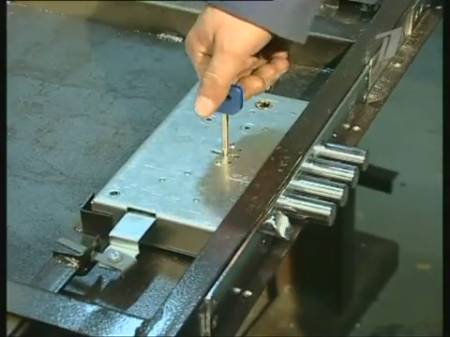

If you just need to change the secret, and the mechanism itself is working normally, then replacing the entrance door lock core will be the best solution. It is also not necessary that the cylinder and the lock were produced by the same manufacturer, the main thing is their clear coincidence in size. If you have to replace the lock cylinder in a metal door, the video will facilitate this task and make it feasible even for a beginner.
The lever lock is distinguished by a more complex secret mechanism, which consists of a package of plates with figured cutouts (levers).
The key to such a lock is in the form of a long round rod with one or two plates at the end. Repair and replacement of the lock of the front door of the apartment in this case is quite specific, and an amateur is unlikely to cope here. In such a situation, it is better to turn to professionals.
How to choose a replacement lock
To choose the right replacement model from the wide variety available on the construction market, you need to pay attention to the following parameters:
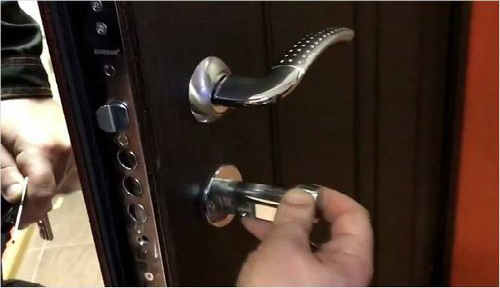

The size... It is necessary that the new part freely enter the prepared hole on the existing lock and fit tightly there.
Safety... It is advisable to install a new cylinder, the protection level of which will be higher than the existing one.
Convenience... For home use, the "spinner key" modification is more convenient, but it all depends on individual preferences. It is important to consider this parameter when choosing.
Color... Models differ not only in complexity, but also in color. On the construction market, there are glossy and matte options, as well as imitating silver or gold. It is important that the shade of the new larva fits under the locking device. So the door structure will look harmonious.
How to change the cylinder in the front door lock
1. Remove the retaining screw holding the old cylinder.
2. Disconnect the cylinder.
3. Pull out the larva with the key.
4. Replace the old core with a new one.
5. Fasten it with the screw.
6. Check the function of the mechanism by locking and unlocking it.
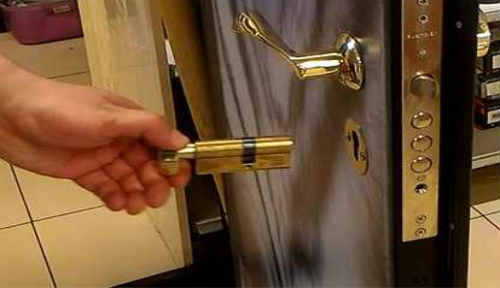

This instruction is relevant for the key-and-key cylinder mechanism (there are keyholes on both sides of the door that can be unlocked with the keys) and the revolving key (there is a keyhole on the outside of the door and a handle for unlocking the door on the inside). The second option is more convenient, since it does not require the use of keys in order to open and lock the lock from the inside. The handle turns easily, which is why it is called a turntable.
Features of the selection of a new door mechanism for replacement
- The new larva must match the old one in length and diameter. To do this, the cylinder must be removed and measured. The length depends on the thickness of the door and padlock, and the diameter depends on the model and manufacturer.
- Rotary cam arrangement: symmetrical or offset to the outside or inside.
- The distance from the end face to the mounting hole can be equal or slightly more, but not less. In the event of a displacement or configuration change, the insert cannot be secured.
- Choose the desired version: with a turnkey keyhole on both sides or with a spinner to open the lock from the inside.
- The larva should be chosen from the same manufacturer as the lock.
- Complete set with the required number of keys so that you do not have to order additional production.
- The color of the coating on the larva should be in harmony with the color of the lock and cover.
- The degree of protection is determined by the burglar resistance class. The reliability indicator should not be inferior to the previous mechanism.
- The ability to resist drilling is provided by the material of the body and the pins inside. For their manufacture, special hardened steel is used.
How to change the larva in a lock with patch handles
If handles are built directly into the locking device, it is convenient to use such a mechanism. However, the presence of handles complicates the process of replacing the lock cylinder. You need to do the following:
1. Unscrew the fastening screw with a screwdriver. This screw is easy to find: it is located under the pull tabs.
2. Remove the screw completely so that the cylinder can swing freely. It is not yet possible to take out the larva, since it is blocked by the overhead handle.
3. Remove the handles on both sides by unscrewing the fastening bolts that hold them. The cylinder is now fully accessible.
4. Insert the key into the keyhole and turn it slowly until the larva is fixed on it.
5. Pull out the key together with the cylinder.
6. In the new cylinder, use the key from its kit to align the flag with the cylinder.
7. Insert the larva into the locking device.
8. Fasten it with the screw.
9. Fix the handles in their original place.
10. Check the operation of the handles and the lock with a new core.
Standard procedure scheme
Before changing the core, be sure to study the features of the procedure.
For mortise cylinder locks
There are two types of mortise locks in which you have to change the larva.
With handles
If you need to replace the core of a lock with padded handles, you will first have to get rid of the fasteners. This is done to provide access to the lock cylinder.Then the fastening bolts installed inside are unscrewed and the structure is removed. After removing the old lock, a new core is installed in the vacant place. It must be installed in such a way that the fixing screw falls into the fastening cavity of the lock. At the same time, it must hit perfectly, without distortions.
Without handles
Some locks are not equipped with additional patch handles. It is much more convenient to work with them, since you do not have to waste time removing the linings. You can immediately unscrew the larva and get it out of the keyhole inside the door.
The new larva is placed in place of the old one, after which the fastening bolt is fixed. It is screwed in until it stops so that the structure does not dangle during use. After installing the core, they check the functionality of the lock. The key should turn right and left without difficulty.
For invoices
Some doors do not use mortise, but overhead devices. To change them, first unscrew the four mounting screws. Then the back cover is removed, which is attached to the door surface with three screws. After that, the screws responsible for fixing the larva are unscrewed.
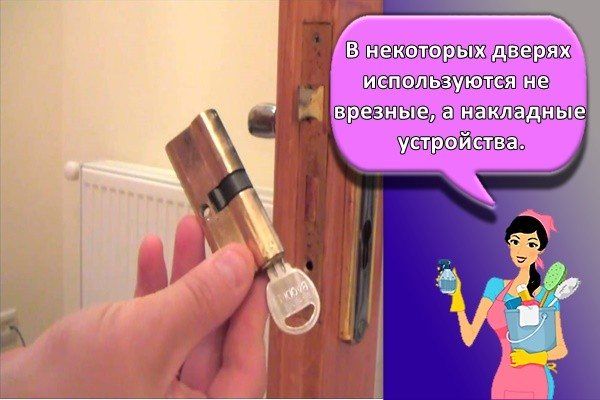

When they are unscrewed, the core is carefully pulled out of the lock structure. In its place, a new part is installed, which is screwed and covered with a lid.
After assembling the structure, check its performance.
With cross key
Cruciform models are used less often than others, as they quickly break. Replacing their core is carried out in several successive stages:
- Removing the lock strips. To do this, unscrew the mounting screws located at the back.
- Removing the housing cover. To get rid of it, twist the screws on the outside of the mechanism.
- Extracting the larva. There are screws under the case cover that fix the key core.
Installing a new part is carried out upside-down.
How to change the cylinder of a patch lock
The process of dismantling the old core and installing a new one in the overhead mechanism differs little from the cut-in one. Access to the cylinder is also opened and a replacement is performed. The difference is that in order to get inside the overhead lock, it must be removed from the door. The stages of work are as follows:
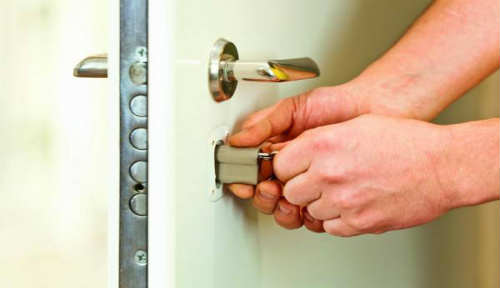

- Unscrew the fastening screws holding the lock on the door leaf.
- Remove the lock.
- Remove its back cover by unscrewing the fasteners.
- Remove the old cylinder by unscrewing the screws holding it.
- Install a new cylinder.
- Tighten the fasteners.
- Put the lock back in place.
- Screw in the fasteners.
- Check the quality of the lock.
Helpful hints:
The following guidelines will help you to replace the cylinder without errors.
- Difficulties may arise when attaching the fastener to the cylinder. When tightening the fastening screw, keep it perpendicular to the end face. Insert into the hole slowly and until it stops.
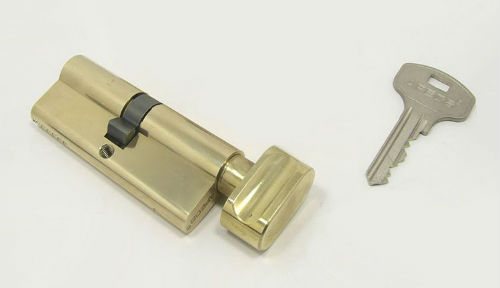

- If the acquired larva turned out to be slightly larger than the existing hole, then it can be expanded with a drill and a chisel.
- When placing a new core in the lock, make sure that it does not fall into the door. It will be difficult to find and remove it; you will need to remove the entire lock.
- The fastening screw must hold the cylinder securely, however, excessive tightening force can break the thread. When the head of the fastener is already level with the metal bar, you need to turn it 1.5 turns - that's enough.
- A common mistake when self-mounting a cylinder is its distortion. Because of this, the lock will not function properly, so it is important to ensure that the cylinder is positioned correctly.
Unpleasant surprises
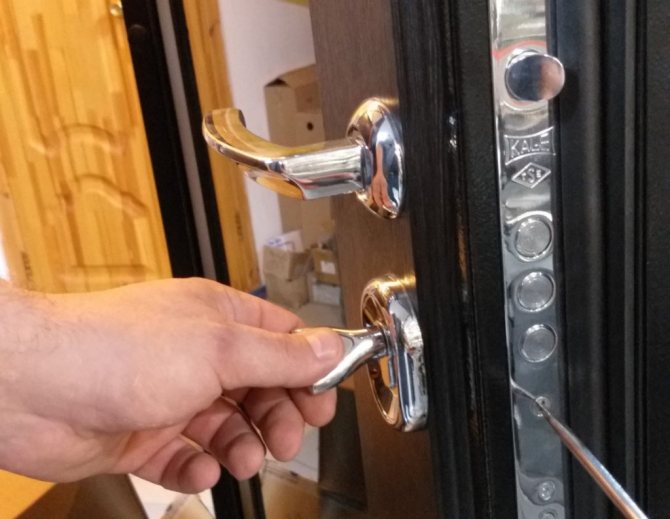

The installation of a larva in an iron door does not always go smoothly, there are often emergency situations.For example, the fixing screw has become so "stuck", rusted, that it is impossible to simply unscrew it. Then you have to break out the core of the device using brute force. To do this, you need to remove the armor plate from the outside of the canvas. Using a pipe wrench, the pliers take hold of the larva and sharply twist it. This will lead to the appearance of a crack, loosening of the fasteners, the core can be pulled out.
Another unpleasant moment is the breakage of the key when opening the door. If you can't get the chip out, then you need to use a screwdriver.
In the case when the lock is completely broken, then you should drill out its pins. You need to start the process where the manufacturer's stamp (sign) is located in the protruding part of the core. In this place, the thickness of the device is about 10 mm, so the drill must be taken at least 6 mm. It is enough to drill on one side of the blade, when the drill passes through them, it will be noticeable.
Recourse
Replacing the cylinder in a cylinder lock is a simple job, but mistakes are possible. It is important to choose the correct replacement model and install it correctly. Upon completion of the work, you need to carefully check its result. How easily the key turns in the keyhole. Do the doorknobs come back or lock. How smoothly the locking tabs change their position. Are extraneous sounds heard when unlocking and locking the door.
If there is no desire to search and install a core, the right decision is to contact a specialist. Our lock service performs this work on a turnkey basis: the master will come to you at once with a set of several larvae, select the one you need and install it. We work in Moscow and the Moscow region. If you live in this region and want to change the castle larva, call us and make an appointment. Our craftsmen are proven professionals who are never late.
Emergency call
Any of the listed methods can be applied both independently and with the assistance of specialists. In this case, the required method will be selected depending on the time during which it is necessary to open the door.
If the lock definitely needs to be left undamaged, then there are organizations that undertake to open any lock for a reasonable fee. But it is advisable to find their contacts in advance, so that when something is wrong with the door, then you do not run around the neighbors with a request to see their addresses and phone numbers.
